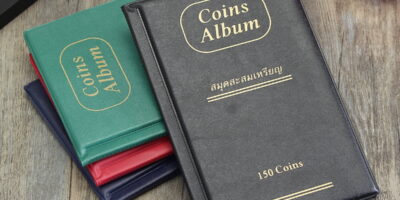What Makes a 1885 Silver Dollar Rare
What Makes a 1885 Silver Dollar Rare
The 1885 silver dollar, commonly known as the Morgan Silver Dollar, stands out as a fascinating piece in American numismatics. The significance of these coins goes beyond simple silver content. It’s steeped in history, mintage numbers, and certain unique characteristics that elevate its rarity and value among collectors.
Brief History
Designed by George T. Morgan, the Morgan Silver Dollar was minted from 1878 to 1904 and then once more in 1921. 1885 was a pivotal year in its production cycle. The coins contain 90% silver and 10% copper, weighing approximately 26.73 grams.
Low Mintage Numbers
One critical aspect that contributes to the rarity of the 1885 silver dollar is its low mintage numbers. While some years saw millions of these coins produced, 1885 had comparatively fewer. For example, the 1885 Philadelphia Mint produced just 17,787,000 coins that year, a lower figure compared to other peak years. The Carson City Mint, famous for its low production and higher demand, minted only 228,000 pieces in 1885.
Mint Marks and Their Influence
Mint marks play a crucial role in defining a Morgan Dollar’s rarity. The 1885 Morgan Silver Dollar was minted in four locations: Philadelphia (no mint mark), New Orleans (O), San Francisco (S), and Carson City (CC). The 1885-CC silver dollar is particularly rare due to its lower mintage, making it a coveted piece for collectors. These mint marks can be found on the reverse side of the coin, beneath the wreath around the eagle.
Condition and Grades
The condition or grade of a coin significantly affects its rarity and market value. Coins are graded on a scale from 1 to 70, with 70 being a perfect, uncirculated specimen. A higher grade 1885 silver dollar in mint state condition (MS65 or higher) can fetch a premium price because of its exceptional quality and preservation. Many of these coins were circulated, leading to wear and tear, which adds to the rarity of those in near-perfect condition.
Errors and Variants
Error coins and variants are another element that piques collector interest. For example, there are variations in strike quality and minor design discrepancies, such as doubling of the date or letters leading to what collectors call doubled dies. These peculiarities can make an 1885 Morgan Dollar particularly rare and even more valuable.
Historical Significance
The historical context of the period also adds to its allure. The 1880s were a time of economic change and growth in the United States. Holding a piece from this era is like owning a tangible bit of that history. It’s a direct link to the late 19th-century America, making it especially significant for history buffs and collectors alike.
Pop Culture and Collecting Trends
Pop culture trends and media portrayal can influence the rarity and demand for specific coins. Television shows, books, and movies that feature coin collecting can spike interest in certain coins, including the 1885 silver dollar. As more people become aware of its history and potential value, the demand increases, thus making it more rare and desirable.
Market Demand
Market demand plays an inherent role in determining a coin’s rarity. Rare coins are consistently in demand among collectors, investors, and enthusiasts. The 1885 silver dollar benefits from a steadily high demand due to its historical significance and appealing design, driving up its market value and rarity.
Provenance
Provenance can enhance a coin’s rarity. A coin that has been part of a renowned collection or has an interesting backstory can fetch higher prices and be considered rarer. Collectors often seek coins with documented history or those that have exchanged hands in famous auctions, adding a layer of prestige and rarity.
Preservation and Care
The way these coins have been preserved over the years also contributes to their rarity. Proper storage and handling play a significant role in maintaining the coin’s condition. Coins that have been preserved in excellent condition are far rarer than those which have suffered environmental damage, improper handling, or cleaning attempts.
Economic Factors
Economic factors, including the fluctuation of silver prices, can influence the rarity and value of the 1885 silver dollar. During times of economic uncertainty, tangible assets like silver coins often see an increase in demand. This heightened interest can increase the coin’s perceived rarity as more collectors and investors vie for limited high-quality pieces.
Authenticity and Counterfeiting
Authenticity is crucial in the world of rare coins. The presence of counterfeits can make genuine pieces even rarer. Collectors and buyers should always seek certification from reputable grading agencies to ensure the authenticity and value of their 1885 silver dollar. Authentic, certified coins tend to be rarer and more sought after than uncertified pieces.
Auctions and Sales Records
The prices these coins fetch at auctions can reflect their rarity. Auction sales offer a snapshot of current market conditions and collector interest. Notably high selling prices for 1885 Morgan Dollars signal to the market that these coins are valuable, which can increase their rarity perception.
Registry Sets
Registry sets, where collectors build competitive collections, can drive the rarity of specific coins. These sets often require coins of particularly high grades, increasing the demand for premium-grade 1885 silver dollars. As collectors strive to complete their sets, the competition for these rare coins escalates.
Educational Efforts
Educational efforts by numismatic organizations and publications also contribute to the rarity of an 1885 silver dollar. As knowledge about these coins spreads, more people become interested in collecting them. This increased awareness boosts the demand for already rare coins, thus amplifying their scarcity and value.

